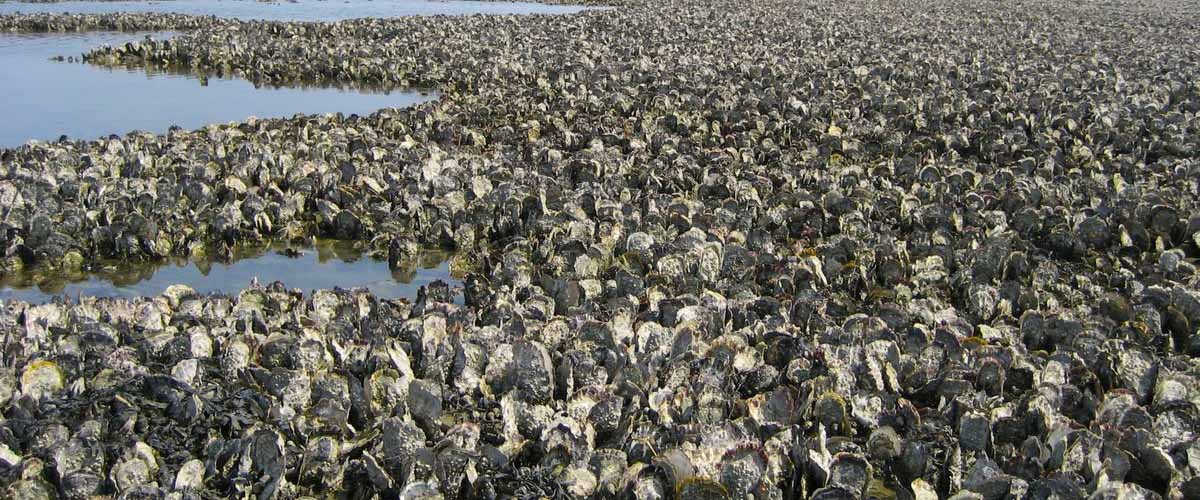By Valerie Perini
As sea levels rise due to climate change, researchers are working to determine how individual species might respond, and predicted impacts include landward range shifts for coastal organisms. Foundation species like oysters are of particular interest, because they provide a habitat for other organisms and serve as a natural shoreline buffer for coastal development. Therefore impacts of sea level rise on oysters have the potential to alter the important roles they play in coupled human-natural systems.
A new publication by a group of researchers including MSC Associate Professor Jonathan Grabowski and led by Justin Tyler-Ridge, a graduate student from the University of North Carolina at Chapel Hill, investigates the impact of proposed sea level rise on the growth of these important reef-building bivalves.
In the study, published in the journal Scientific Reports, they measured air exposure of oysters during the tidal cycle and reef growth rates over a 2-year period. With this data they were able to construct a relationship between time exposed to air and growth rates, and calculate thresholds indicating when oysters thrive or fail to grow. The results indicate that maximum oyster growth is achieved when the organisms are exposed to air 20-40% of the tidal cycle, whereas little growth occurs if oysters are exposed to air less than 10% or more than 55% of the time.
To relate these results back to sea level rise, the authors note that the reefs they studied would be exposed to air less than 10% of the time in a projected sea level rise scenario, resulting in reduced or zero growth. The authors also discuss the possibility of oyster reefs migrating towards land to cope with sea level rise, in order to stay in the 20-40% air exposure range that maximizes growth. However, this is only possible in natural areas because coastal development will prevent landward migration of coastal organisms in many cases.
This work sheds light on the fate of an important foundation species in the face of predicted sea level rise, and identifies where oyster reefs will thrive and continue to provide shoreline buffering and other important ecosystem services.

